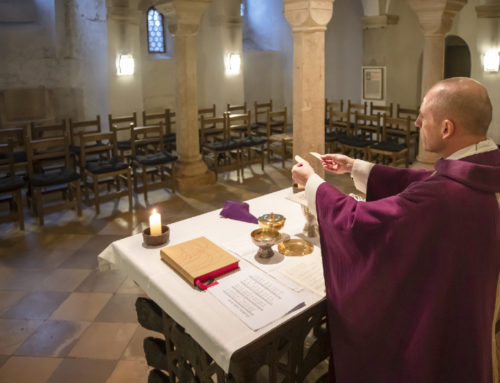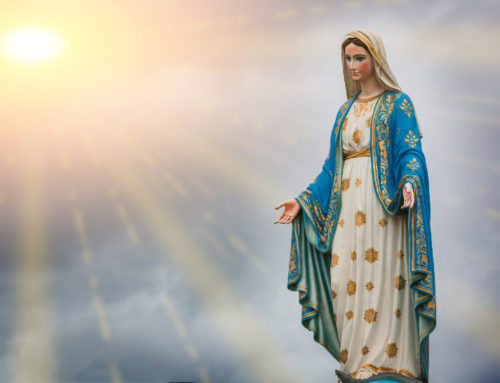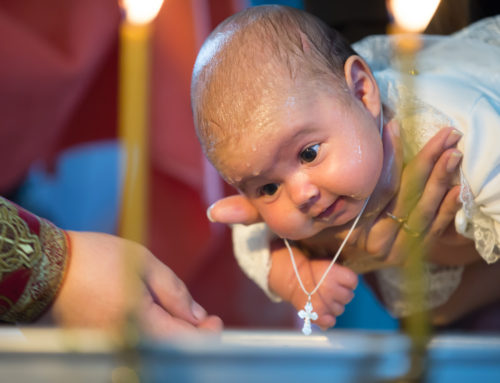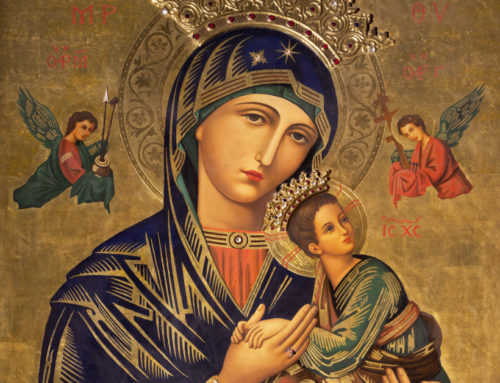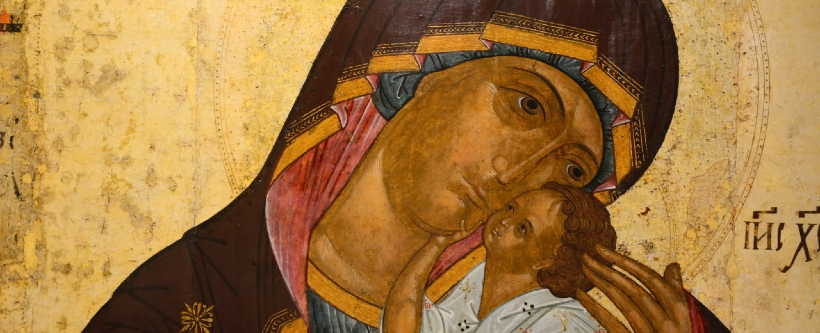
an antique Russian Orthodox icon
There are so many problems in Russia today with the Russian Orthodox Church and the Catholic Church. Are these caused by the historical split of the churches or by something else?
The Russian Church was the last of the Orthodox to break communion with Rome. There was no actual documented break, but, rather, intercommunion slowly faded away. Thus, problems that we see today are really not directly related to the historical separation, although they are not divorced from those events. Looking at the problem dispassionately, we can see that there are two issues that lead directly to what is happening today, and they are a result of that break in communion and the events that followed.
Russia was primarily an Orthodox country, and the Russian Orthodox Church was established by the Patriarch of Constantinople at the request of the Russians (AD 988). The evangelization fo Russia was, therefore, an Eastern evangelization. The Russian Orthodox Church grew to be the largest of the Orthodox Churches and eventually received autocephalous status (meaning that they were removed from the jurisdiction of the ecumenical patriarch) and the head of the Russian Church became a patriarch himself (1589). This church was not immune to the problems that plagued other churches, including their own reactionaries, revolutionaries, and heretics.
One of the problems that followed the Communist takeover of the country in 1917 was the underground movement of the church. but that was compounded by the placement of KGB agents within the church herself. Many became priests and a few became bishops. This caused no small concern on the part of the faithful. Further, Stalin suppressed (quite forcefully) the Ukrainian Catholics.
After the Union of Brest, Ukrainian Catholics had their own churches in Russia and other places under Communist control. All religions were suppressed by the government and their buildings confiscated. The churches were allowed to keep only those buildings used for worship. All religious education was suppressed, and all education – including the formation fo priests – was turned over to the state. The only church with sufficient strength to offer any resistance was the Russian Orthodox Church, which, at the start of 1917 had reestablished the patriarchate (suppressed under Peter the Great in the eighteenth century) and elected the Metropolitan of Moscow, Tikhon, as the new patriarchate but made him subject to the sobor (the synod of bishops).
Eventually, all “itinerant” preaching (preachers who did not have fixed churches) was prohibited. Catholics were not exempt form this, and found themselves persecuted severely. Eventually, only the Russian Orthodox Church was permitted to operate, and even there the state carefully supervised what was happening.
With the fall of communism (1989-1992), these Eastern Catholic Churches wanted their buildings back. Because all of the buildings and churches had been turned over to the state or to the Russian Church, this meant that someone would have to build a new church. The Russian Church did not want to undertake this since money was not available for this project.
In addition to this, there were issues of being a single church. Moscow is faced with several churches that claim to be “Orthodox,” but that are not under the Patriarchate of Moscow. In the mind of the patriarch, this confusion could lead to defections form the church in favor of Rome, if Rome were to undertake large-scale evangelization efforts. Moscow has, therefore, denied Rome access to the country (note, for example, that Pope John Paul II was never able to visit Russia, much to his dismay). In spite of this, Rome has appointed three bishops for territory within Russia.
The combination of these things have led to the problems between Rome and Moscow. However, as the source was being written, there were some indications of a thaw in relations between the two churches, which holds some promise for future developments.
Excerpt from Faulk, Edward. 101 Questions and Answers on Eastern Catholic Churches. (Paulist Press: Mahwah, NJ) 2007.

